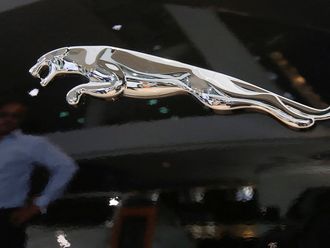Customer loyalty is the end goal for marketers, a prize that guarantees shoppers coming back for more. With consumers demanding an increase in engagement from brands, there is more opportunity to stay connected with your target audience long after an in-store or online visit.
A good first impression for a customer only lasts until it’s replaced by the next store they visit. Creating a lasting relationship relies on a selection of tools that can help build a loyalty programme that reflects the consumers’ needs and the brand’s personality.
1. Consumer needs
Customer needs vary but the benefit of technology is that data can now give you insights into patterns and the way they shop. Point-of-sale (POS) data is a direct insight and allows you to build a loyalty programme that is reflective of the consumers it will be marketed to. Many retailers find that 60-70 per cent of their customers drop off after the first transactions, so driving the second transaction becomes a priority.
Amazon guides consumers to future purchases with features such as a wishlists and suggested products. The “Customers who bought this item also bought …” feature adds credibility to the brand by sharing purchasing patterns from real data.
Not only does it bring people’s attention to products they were previously unaware of, it also saves them time by bringing the information to them rather than pushing them to search for it themselves.
2. Conversion
Once consumers have been enticed by new products available, brands need to engage to convert interest into sales. By implementing a benefit at point-of-sale, consumers connect making the purchase with being rewarded, which delivers them added value that they are unlikely to receive if they prolong the process.
Vouchers and discounts are historically successful, but the right incentive needs to be developed around the personality and needs of consumers. Our 2016 Middle East Mass Affluent found that 19 per cent of all shoppers would be encouraged to shop more frequently or spend more with a brand if they received discounts on future purchases. Additionally, 17 per cent of affluent consumers expect offers that are personalised and relevant to them when they walk into a store, showing that many expect retailers to use data insights to create a more valuable, customer-centric relationship.
3. Messaging
Relationships with consumers needs to be nurtured and developed over time, and the correct messaging can not only strengthen a brand’s perception, it can help to introduce and push the loyalty benefits and offers to the target audience. To successfully connect, communication needs to be developed to reflect the information that they need, at times and on platforms that are best suited to their lifestyles.
Thanks to historical data, a well-known retail specialist in newborn and parenting products were able to identify specific life stages when purchases of certain products were most likely to occur. This information formed the basis of a communication strategy that pinpointed the right information on the peaks and lows of each customer’s life stage.
This resulted in more targeted messaging that saw an increase in open rates for emails from 25 per cent to 45 per cent.
4. Customer Value
Data mining at POS is the key to better understanding customers and how to best deliver to their shopping requirements. However, data can also illustrate the value of customers and their spending power.
Specific incentives can be devised based on the different spending habits of a target audience that are aligned with their pre-existing purchasing pattern. This data is also key to reviewing the success of loyalty offers, and can track any purchasing trends that require amendments to offers available.
5. Internal education
Brand communication should be reflected in the in-store and online experience. Brands need to invest in education for staff to ensure that they know the best way to interact with customers, introduce them to offers and services provided and lead them down the sale funnel in a way that leaves them with a lasting impression.
Our study found that 8 per cent of consumers are likely to spend more in a store where they are greeted by name and made to feel like a valued customer and that consumers are increasingly looking to retails that offer personalised money-can’t-buy experiences over generic, point based rewards.
By leveraging data and implementing small changes, brands can bring together the marketing elements that best suit their customers, deliver a personalised experience and cement brand loyalty. Over time, these changes will help to create a 360-degree loyalty programme that can be altered based on the changing retail or customer landscape.
— The writer is General Manager, ICLP Dubai.












